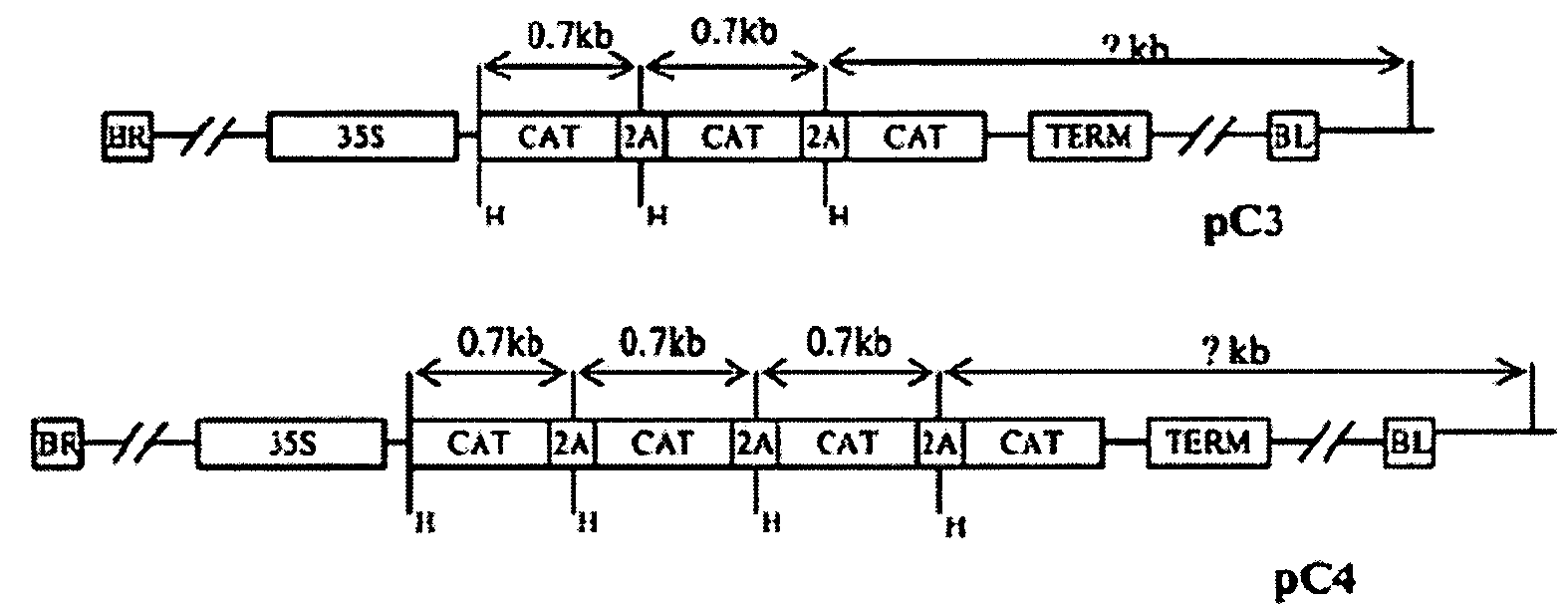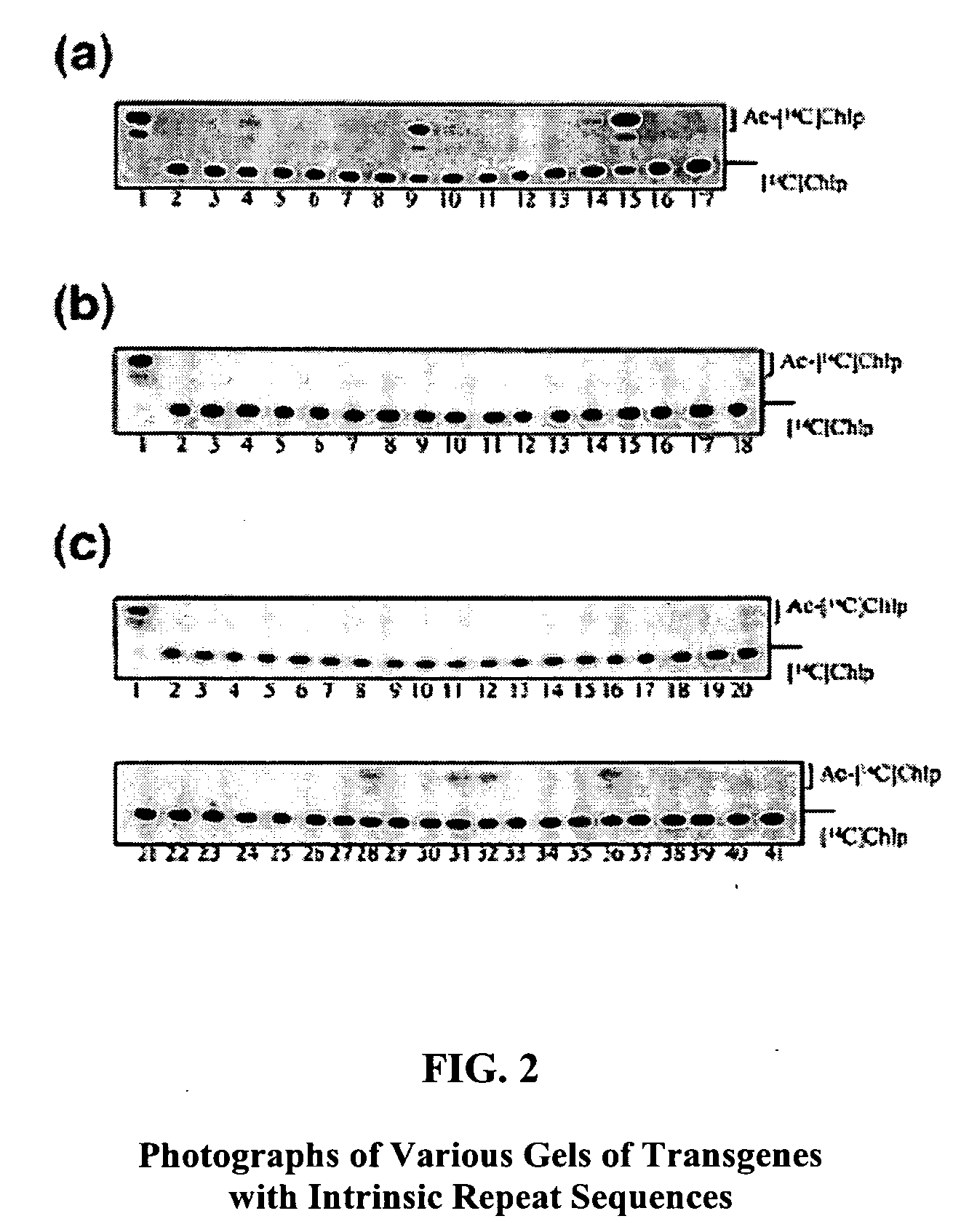Method for efficient post-transcriptional gene silencing using intrinsic direct repeat sequences and utilization thereof in functional genomics
a direct repeat sequence and post-transcriptional silencing technology, applied in the field of gene and plant science, can solve the problems of complication of the procedure, lack of consistency in triggering ptgs,
- Summary
- Abstract
- Description
- Claims
- Application Information
AI Technical Summary
Benefits of technology
Problems solved by technology
Method used
Image
Examples
Embodiment Construction
Transgenes with Direct-Repeats Cause High Frequency Gene Silencing in Primary Transformants
[0019]The foot-and-mouth disease virus (FMDV) 2A protease is a small protease of 16-20 amino acids that processes viral polyproteins at carboxyl termini. Translation of the viral RNA produces a polyprotein that is cleaved by the 2A protease to generate single functional protein units. We designed expression cassettes containing the FMDV 2A protease to express multiple transgenes in a single open reading frame (ORF) in plant cells. In each of these cassettes, multiple copies of reporter genes, cat and b-glucuronidase (gus) were fused into a single open reading frame with or without the 2A gene. Several expression cassettes (CC, CAC, GG, GAG, C3, C4, CGC, GC3 and C3G) contained tandemly repeated cat or gus genes (see FIG. 1). For example, construct C3 (CAT / 2A / CAT / 2A / CAT) had 3 copies of the cat gene arranged as a direct repeat with intervening 2A protease gene (approximately 60 base pairs) (see ...
PUM
| Property | Measurement | Unit |
|---|---|---|
| Northern Blot | aaaaa | aaaaa |
| frequency | aaaaa | aaaaa |
| Frequency | aaaaa | aaaaa |
Abstract
Description
Claims
Application Information
 Login to View More
Login to View More - R&D
- Intellectual Property
- Life Sciences
- Materials
- Tech Scout
- Unparalleled Data Quality
- Higher Quality Content
- 60% Fewer Hallucinations
Browse by: Latest US Patents, China's latest patents, Technical Efficacy Thesaurus, Application Domain, Technology Topic, Popular Technical Reports.
© 2025 PatSnap. All rights reserved.Legal|Privacy policy|Modern Slavery Act Transparency Statement|Sitemap|About US| Contact US: help@patsnap.com



